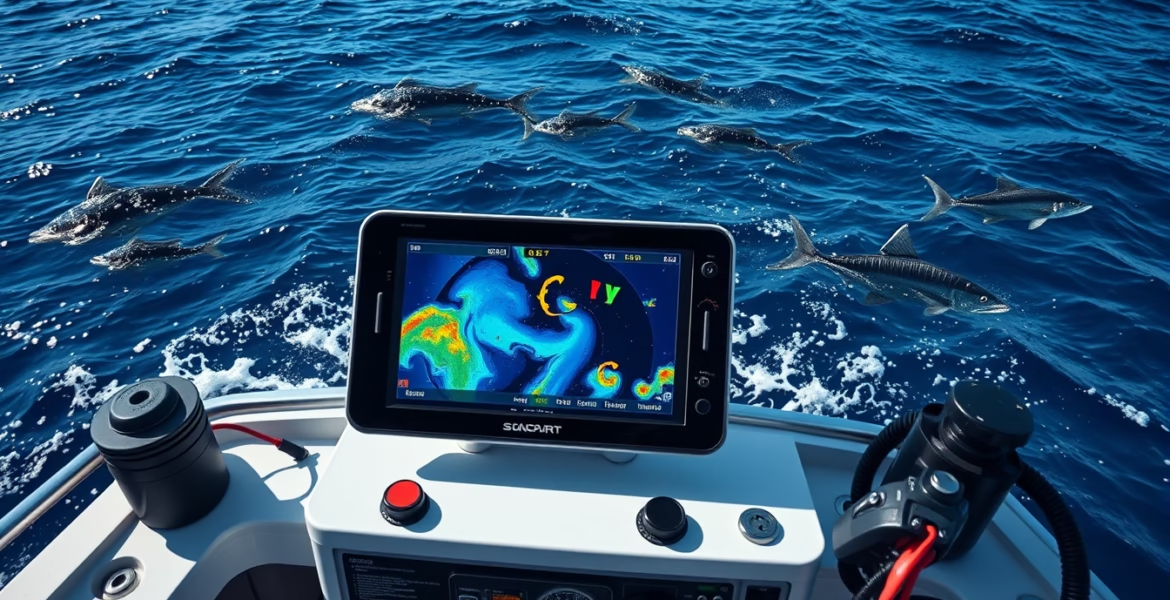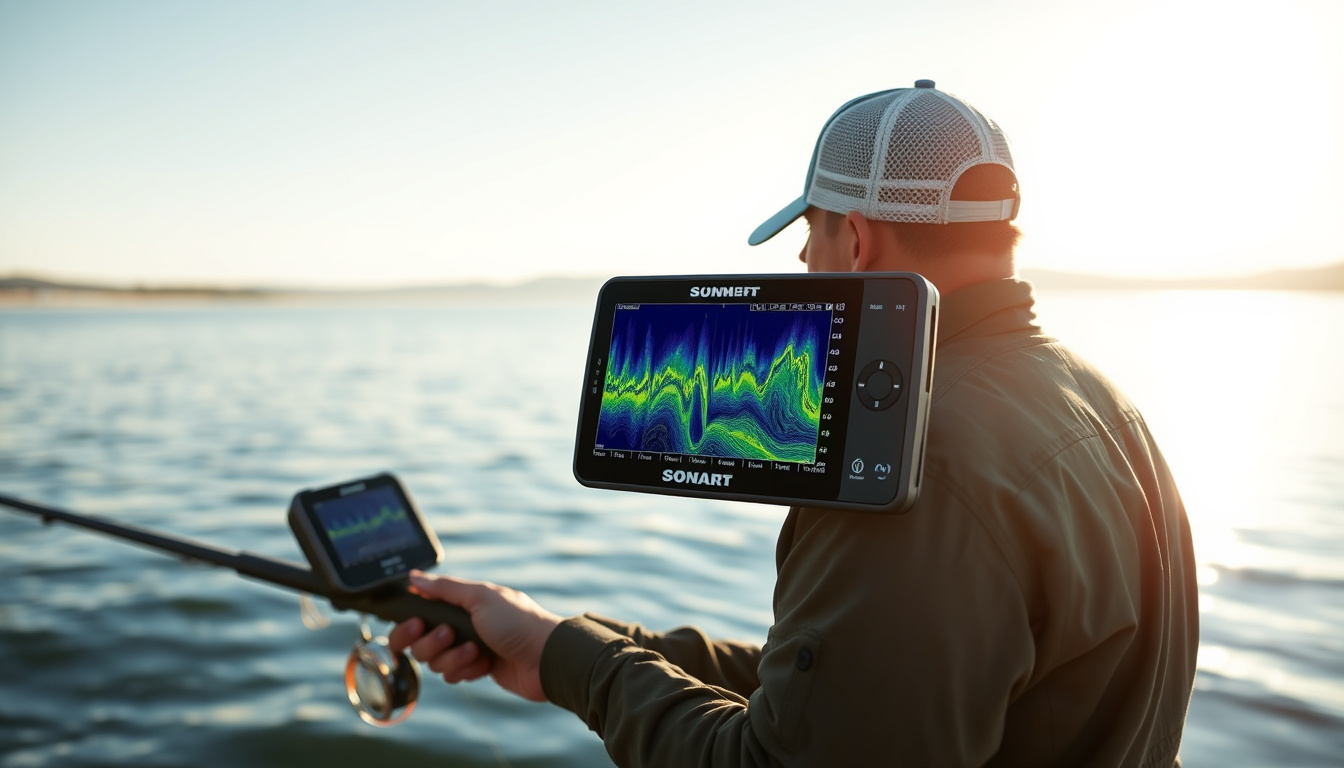
Fishing Sonar Technology: Boost Your Catch with Advanced Techniques
On July 16, 2025 by Andy FordFishing sonar technology changed how anglers find and catch fish. It helps both new and skilled fishermen. Sound waves travel in the water. They hit fish or the lake bed and bounce back. The device shows water depth, bottom shape, and fish spots. In this article, we look at sonar functions, new tech progress, and simple tips to use sonar for a better fishing day and more fish.
Understanding Fishing Sonar: How It Works
At sonar’s heart is echolocation. A device sends sound pulses. The pulses hit an object—like fish or the bed—and return quickly. The system scores the time gap and makes a basic image or graph. This screen helps anglers see underwater shapes, fish moves, and water depth.
Old sonar units sent one cone beam beneath the boat. New sonar uses many beam paths, various frequencies, and tools like CHIRP, Down Imaging, and Side Imaging. These changes give you clear and close pictures of what lies underwater.
The Latest Advances in Fishing Sonar Technology
In recent years, fishing sonar grew much smarter. New tech helps anglers find good fishing spots. Key progress parts include:
1. CHIRP Sonar
CHIRP sonar sends a range of sound pulses. This produces clean images with clear target separation. Anglers see single fish, groups of fish, and underwater shapes with care.
2. Down Imaging and Side Imaging
- Down Imaging: Gives a clear view directly under the boat. It helps you spot fish hidden by rocks or plants.
- Side Imaging: Shows a wide, sharp view of the area on each side of the boat. It scans a large area fast so that you can spot cover, drop-offs, or channels.
3. Integration With GPS and Mapping
Many units include built-in GPS and maps. You can mark good spots and plan new trips. Mapping even shows underwater contours so you know where fish might be.
Some fish finders work wirelessly with phones or tablets. This lets you change sonar details and see data from a short distance. It also helps share your spot with friends, all without being at the helm.

Choosing the Right Fishing Sonar for Your Needs
Pick the best sonar based on your fishing style, money, and water type. Think of these points:
- Frequency: Low (50-83 kHz) works in deep water but gives less detail. High (200-250 kHz) is best for shallow water with clear images.
- Beam Angle: Wide beams cover more water but are less detailed. Narrow beams give a close view for good target spotting.
- Display Quality: A bright, clear screen helps you read sonar lines.
- Power: More power gives better signals in deep or murky water.
- Extra Choices: GPS maps and marking ways add to your fish-finding skills.
Tips for Using Fishing Sonar Effectively
Use these hints to get more from your sonar and connect its clues with good fishing habits.
1. Learn to Read Sonar Images
Watch the screen as it shows curves, arcs, and dots. Fish show as arcs or dots. Big arcs often mean big fish. Water floors, weeds, and clutter show in other forms. Practice to see these signs.
2. Use Multiple Frequencies
Try different frequencies to suit your water. CHIRP units work with many frequencies at once to help you fast find what works.
3. Mark and Return to Hotspots
Mark good spots using your built-in GPS. Come back to these areas later to catch more fish.
4. Watch Water Temperature and Structure
Some units now read water temperature. They show layers where fish gather. Look for drop-offs, sunken logs, or weed beds where fish stick.
5. Keep Your Transducer Clean and Steady
The transducer sends and picks up sound. Clean it and fix it well on your boat. This keeps your readings sharp.
Enjoying the Benefits of Fishing Sonar
Using sonar gives many upsides:
- Faster fish search: You can spot fish and skip empty spots.
- Clear view of the underwater ground: See shapes that both hide fish and could be hazards.
- Safer trips: Avoid shallow or risky areas.
- Use all year: Sonar works in all weathers and water looks.
FAQ: Fishing Sonar Basics and Beyond
Q1: What sonar is best for freshwater and saltwater?
A1: For freshwater, high-frequency sonar (200 kHz or more) with Down and Side Imaging fits shallow water well. Saltwater in deep parts works best with low frequency (near 50 kHz) and strong power.
Q2: Can I use sonar on small boats or kayaks?
A2: Yes! Some sonar units are small and light. They are made for kayaks and small boats. Many have easy screens and transducers that can be moved or cast.
Q3: How does sonar help beginners catch more fish?
A3: Sonar gives quick clues on fish spots and underwater shape. This means less guesswork. New anglers learn fish habits faster and cast with more skill, which leads to more fish.
Enhancing Your Fishing Success with Sonar Technology
Fishing sonar has changed fishing from a guess game to a smart skill. Seeing underwater in real time helps anglers try new spots, find the best areas, and change plans as needed. Picking the right sonar and learning its use increases your chance of more fish and a fun day on the water.
If you are set to boost your fishing, think of a modern sonar device. It saves time, keeps your efforts smart, and lets you feel the water close up. For more details on sonar and hands-on hints from experts, check resources like the U.S. Fish and Wildlife Service (source).
Take Action Now
Do not let hidden water keep you back. Grab fishing sonar and learn the secrets below. Whether your goal is to catch bass, trout, or saltwater fish, a well-chosen sonar and some study turn every trip into a win. Look at your choices, set up your gear, and see fish like before!

Leave a Reply